LINKSYS EA6350V3 Linksys Smart Wi-Fi Router AC1200 User Manual
LINKSYS LLC Linksys Smart Wi-Fi Router AC1200
LINKSYS >
User Manual
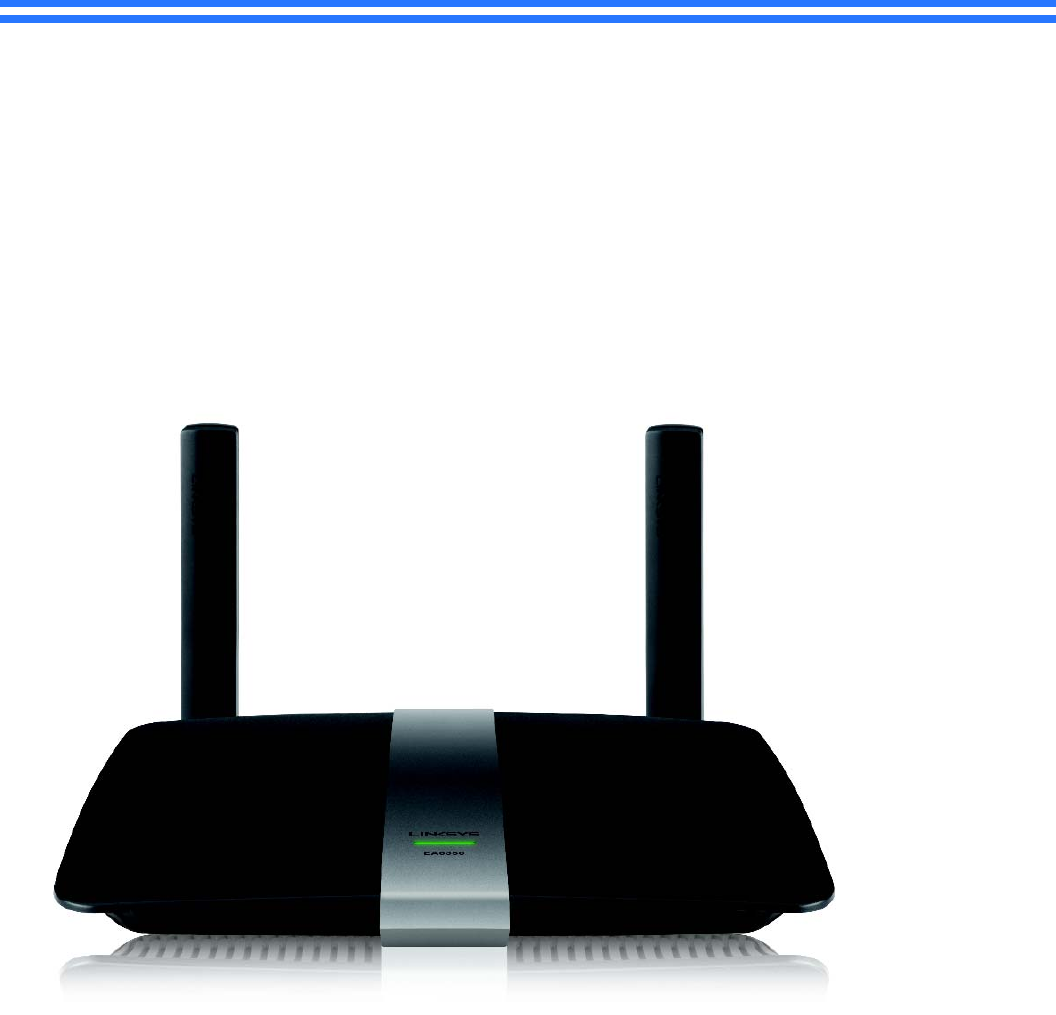
Product Overview
EA6350 V3
Top view
Indicator light—Stays on steadily while power is connected and following a successful Wi-Fi Protected Setup connection. Flashes
or pulses slowly during bootup, during firmware upgrades, and during a Wi-Fi Protected Setup connection. Flashes quickly
when there is a Wi-Fi Protected Setup error.
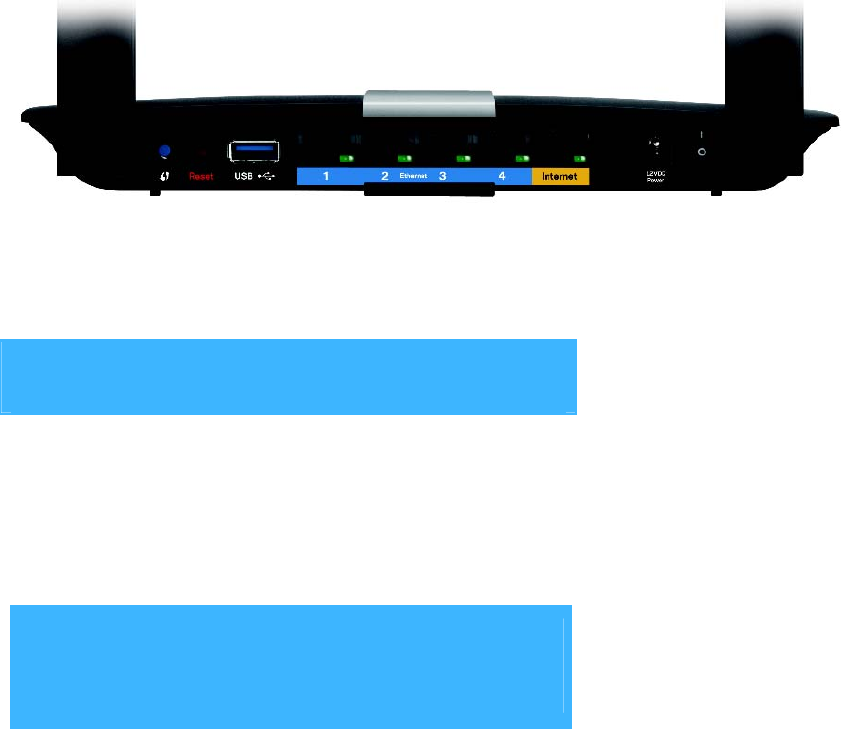
Back view
Adjustable Antenna ports— The included 2 adjustable external antennas should be connected to the router before
powering it on. Twist the antenna connector clockwise onto the port on the router.
NOTE
For best performance, position the side antennas at a 30˚ angle
as shown in the picture on the left.
Wi-Fi Protected Setup™ button— Press to easily configure wireless security on Wi-Fi Protected Setup-enabled network
devices.
USB port—Connect and share a USB drive or a USB printer.
Ethernet ports—Connect Ethernet cables to the blue gigabit (10/100/1000) ports and to wired Ethernet network devices.
NOTE
For best performance, use CAT5E or higher rated cables on the
Ethernet ports.
Internet port—Connect an Ethernet cable to this yellow port and to your modem.
Reset button—Press and hold for 10 seconds (until the port lights flash at the same time) to reset the router to its factory defaults.
You can also restore the defaults using Linksys Smart Wi-Fi.
Power port—Connect the included AC power adapter.
Powerbutton—Press | (on) to turn on the router.

Setting Up Your EA-Series Router
Where to find more help
Linksys.com/support (documentation, downloads, FAQs, technical support, live chat, forums)
Linksys Smart Wi-Fi help (connect to Linksys Smart Wi-Fi, then click Help at the top of the screen)
How to install your router
Toinstallyourrouter:
If replacing an existing router, disconnect it. Power on your new router.
Connect the Internet cable from your modem to the yellow Internet port on your router. Wait until the power light on the front of
the router is solid.
Connect to the secure wireless name shown in the QuickStartGuide that came with your router. (You can change the network
name and password later during router setup.) If you need help connecting to the network, refer to your device documentation
CD. Note: You will not have Internet access until router setup is complete.
Open a web browser and follow the instructions to complete your router’s setup. If instructions do not appear in the web browser,
enter linksyssmartwifi.comin the browser’s address bar.
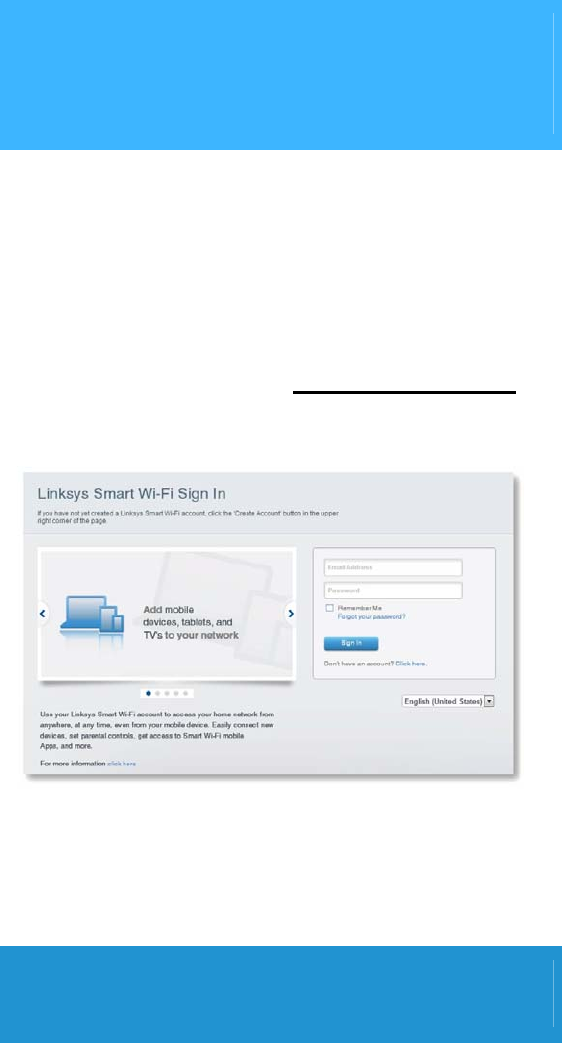
At the end of setup, follow the on-screen instructions to set up your Linksys Smart Wi-Fi account. Use Linksys Smart Wi-Fi to
easily manage your router’s settings, such as:
Change your router’s name and password
Set up guest access
Configure parental controls
Connect devices to your network
Test your Internet connection speed
NOTE:
As part of Linksys Smart Wi-Fi account setup, you will be sent a
verification e-mail. Make sure that you open the e-mail from Linksys
and click the provided link.
How to connect to Linksys Smart Wi-Fi
You can use Linksys Smart Wi-Fi to configure your router from any computer that has an Internet connection.
ToopenLinksysSmartWi‐Fi:
Click the Linksys Smart Wi-Fi icon on your desktop.
- OR -
Open a web browser and go to www.linksyssmartwifi.com.
Enter the e-mail address and password you set up earlierand click Log in.
How to change router settings
Use Linksys Smart Wi-Fi to change settings on your router and set up special features such as parental controls and guest access.
NOTE:
For additional help on any menu, click Help at the top of the screen.
To change router settings:
Open Linksys Smart Wi-Fi and log in to your account.
In the menu on the left, click an option:
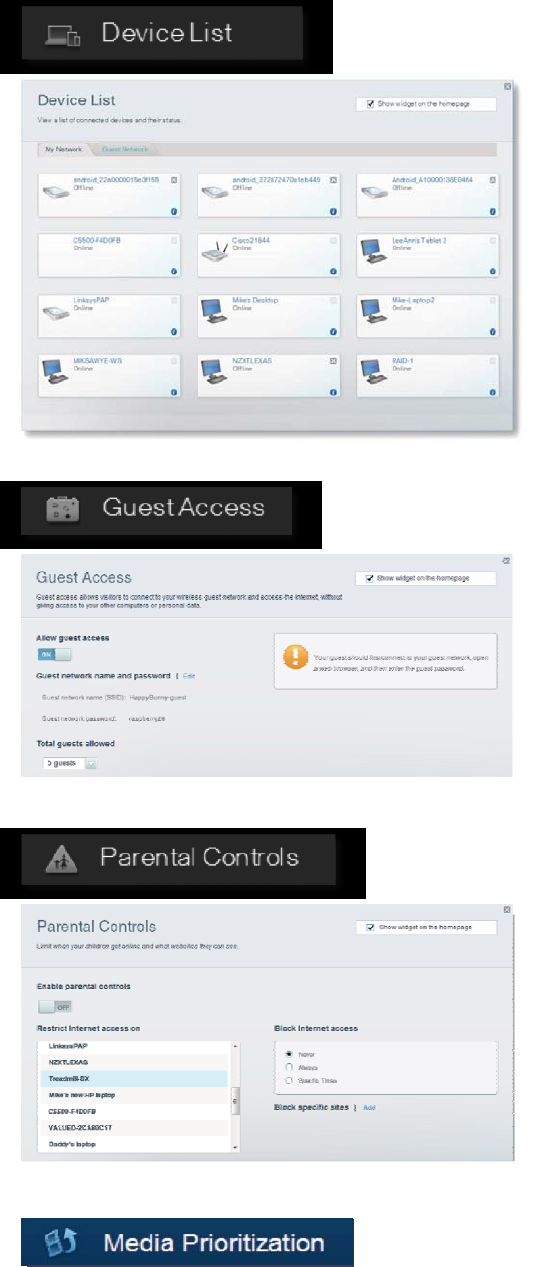
Device List lets you display and manage all network devices connected to your router. You can view devices on your main
network and your guest network, disconnect the devices, or display information about each device.
Guest Access lets you configure a network so guests can access the Internet, but not all of your network resources.
Parental Controls let you block web sites and set Internet access times.
Media Prioritization lets you set which devices and applications have top priority for your network traffic.
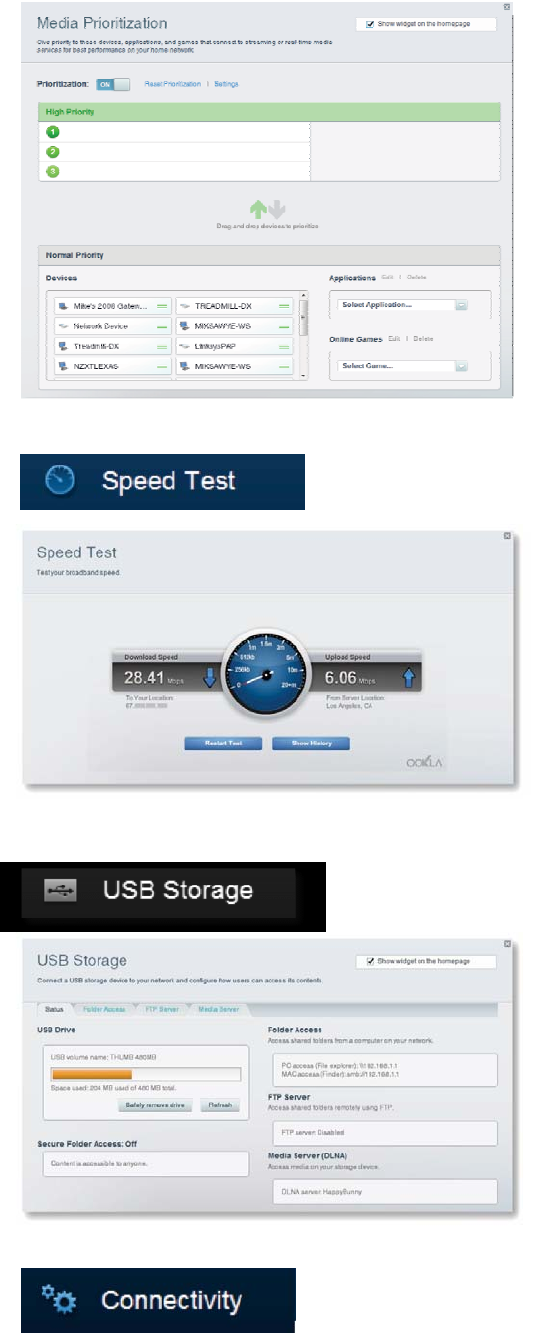
Speed Test lets you test your network’s Internet connection speed.
USB Storage lets you access an attached USB drive (not included) and set up file sharing, a media server, and FTP access.
(Available only on routers with USB ports.)
Connectivity lets you configure basic and advanced network settings.
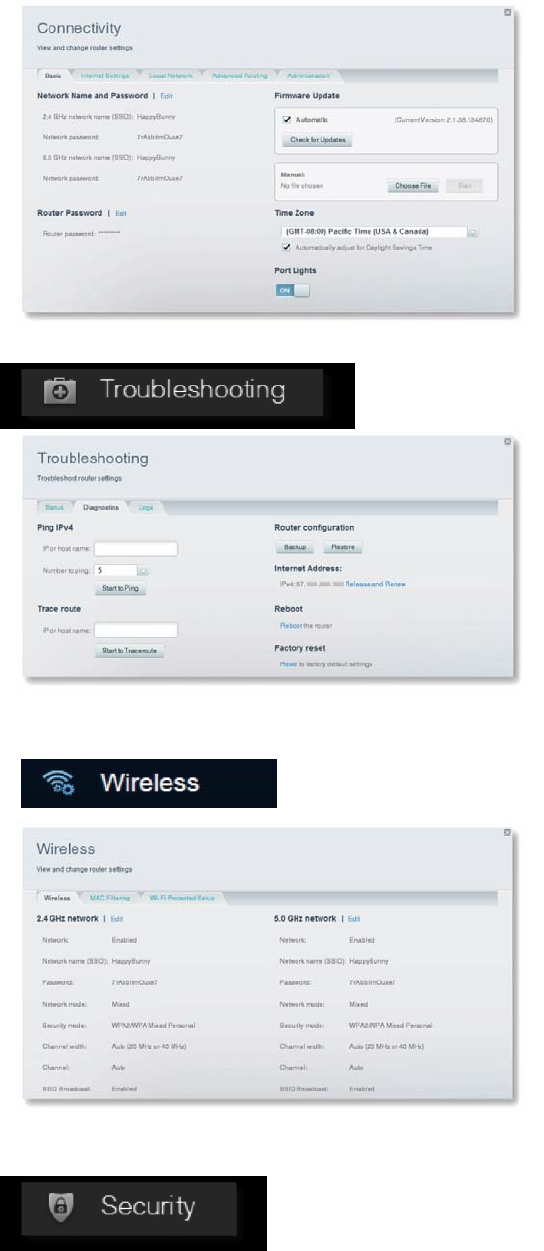
Troubleshooting lets you diagnose problems with your router and check the status of the network.
Wireless lets you configure your router’s wireless network. You can change the security mode, password, MAC filtering, and
connect devices using Wi-Fi Protected Setup™.
Security lets you configure your router’s wireless security. You can set up the firewall, VPN settings, and make custom settings
for applications and games.
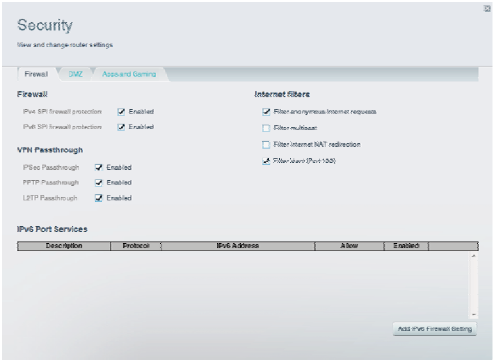
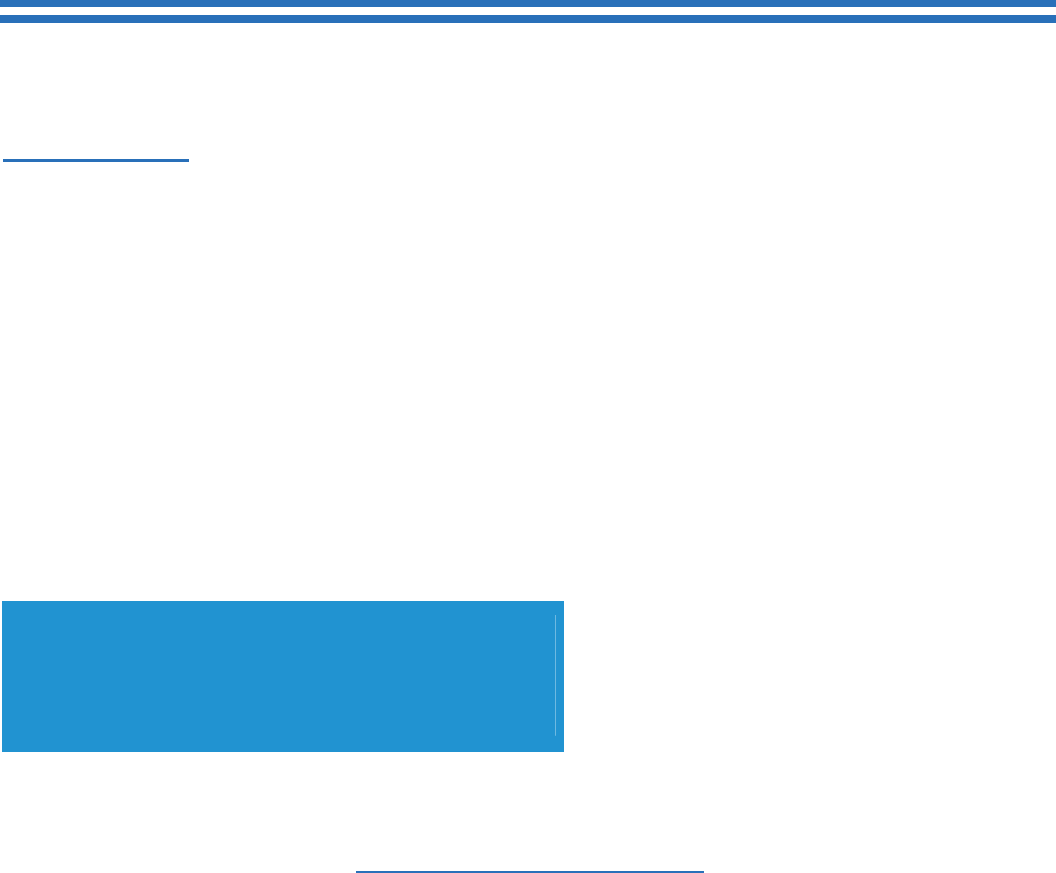
Troubleshooting
This chapter can help you solve common setup issues and connect to the Internet. You can find more help from our award-winning
customer support at
linksys.com/support.
Your router was not successfully set up
IfLinksysSmartWi‐Fididnotcompletethesetup,youcantrythefollowing:
Press and hold the Reset button on your router with a paperclip or pin until the LED starts flashing (about 10 seconds), then
install the router again.
Yourrouter’sappearancemayvary
Temporarily disable your computer’s firewall (see the security software’s instructions for help), and install the router again.
If you have another computer, use that computer to install the router again.
Windows XP Service Pack update
On Windows XP computers, Linksys Smart Wi-Fi requires Service Pack 3. If the currently installed Service Pack is older than version
3, you need to download and install Service Pack 3.
TIP
To temporarily connect to the Internet and download the required
Service Pack, you can use the included Ethernet cable to connect
your computer directly to your modem.
ToinstallServicePack3:
Connect to the Microsoft Update website (update.microsoft.com/windowsupdate).
Follow the instructions on the website or contact Microsoft if you need further help.
After downloading and installing Service Pack 3, install the router again.
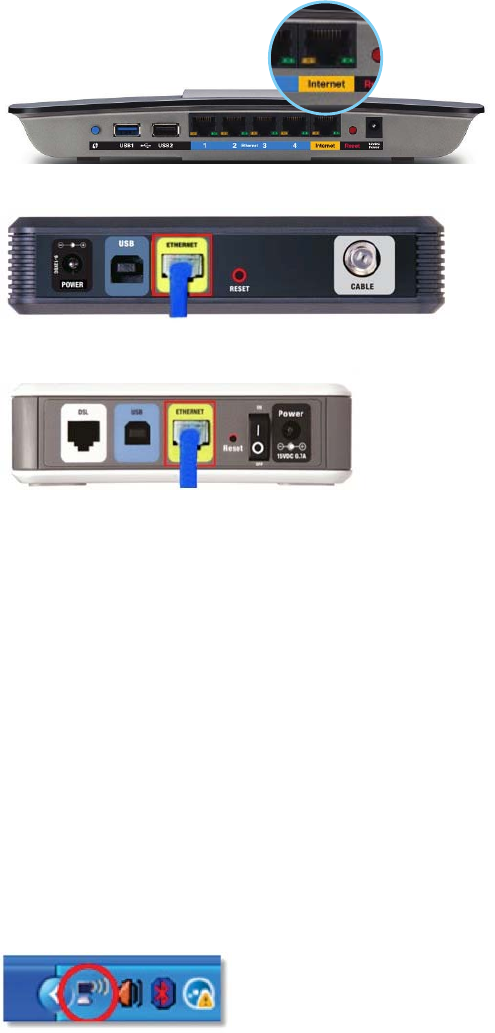
YourInternetcableisnotpluggedinmessage
If you get a “Your Internet cable is not plugged in” message when trying to set up your router, follow these troubleshooting steps.
Tofixtheproblem:
Make sure that an Ethernet or Internet cable (or a cable like the one supplied with your router) is securely connected to the yellow
Internet port on the back of the router and to the appropriate port on your modem. This port on the modem is usually labeled
Ethernet, but may be named Internet or WAN.
Backviewofrouter
Backviewofcablemodem
BackviewofDSLmodem
Make sure that your modem is connected to power and is turned on. If it has a power switch, make sure that it is set to the ON
or l position.
If your Internet service is cable, verify that the cable modem’s CABLE port is connected to the coaxial cable provided by your ISP.
Or, if your Internet service is DSL, make sure that the DSL phone line is connected to the modem’s DSL port.
If your computer was previously connected to your modem with a USB cable, disconnect the USB cable.
Install the router again.
Cannotaccessyourrouter message
If you cannot access your router because your computer is not connected to your network, follow these troubleshooting steps.
To access your router, you must be connected to your own network. If you currently have wireless Internet access, the problem may
be that you have accidentally connected to a different wireless network.
TofixtheproblemonWindowscomputers:
On your Windows desktop, right-click the wireless icon in the system tray. The icon can differ depending on your version of
Windows.
Click View Available Wireless Networks. A list of available networks appears.
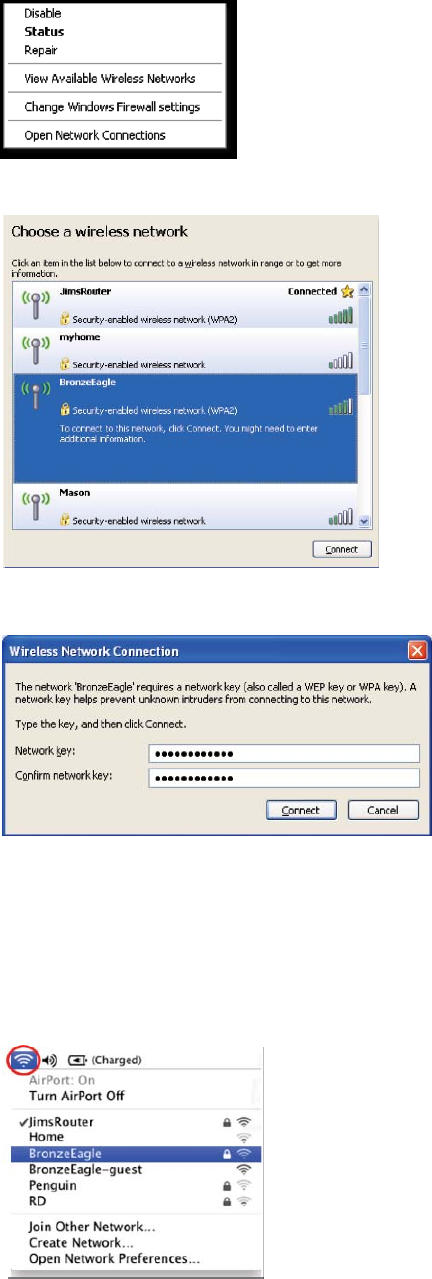
Click your own network name, and click Connect. In the example below, the computer was connected to another wireless network
named JimsRouter. The name of the Linksys E-Series network, BronzeEagle in this example, is shown selected.
If you are prompted to enter a network key, type your password (Security Key) into the Network key and Confirm network key
fields, then click Connect.
Your computer will connect to the network, and you should be able to access the router.
TofixtheproblemonMaccomputers:
In the menu bar across the top of the screen, click the Wi-Fi icon. A list of wireless networks appears. Linksys Smart Wi-Fi has
automatically assigned your network a name.
In the example below, the computer was connected to another wireless network named JimsRouter. The name of the Linksys E-
Series network, BronzeEagle in this example, is shown selected.
Click the wireless network name of your Linksys E-Series router (BronzeEagle in the example).
Type your wireless network password (Security Key) into the Password field, and click OK.
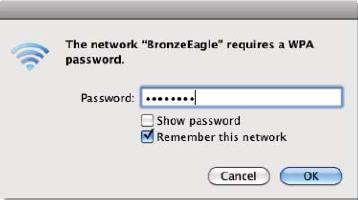

Specifications
Model Name Linksys Smart Wi-Fi Router AC 1200
Description Dual-Band AC Router with Gigabit and 1×USB
Model Number EA6350 V3
Switch Port Speed 10/100/1000 Mbps (Gigabit Ethernet)
Radio Frequency 2.4 and 5 GHz
# of Antennas 2 external adjustable antennas
Ports Power, USB (1), Internet, Ethernet (1-4), R-SMA antenna (2)
Buttons Reset, Wi-Fi Protected Setup,
power
LEDs Top panel: Power
Back panel: Internet, Ethernet (1-4)
UPnP Supported
Security Features WEP, WPA2, RADIUS
Security Key Bits Up to 128-bit encryption
Storage File System Support FAT, NTFS, and HFS+
Browser Support Internet Explorer 8 or higher, Firefox 4 or
higher, Google Chrome 10 or higher, and
Safari 4 or higher

Environmental
Dimensions 10.8” x 1.58” x 7.25”
(256 x 40 x 184 mm)
Unit Weight 17.67 oz (501 g)
Power 12V, 2A
Certifications FCC, IC, CE, Wi-Fi a/b/g/n/draft ac,
Windows 7, Windows 8, DLNA
Operating Temp. 32 to 104°F (0 to 40°C)
Storage Temp. -4 to 140°F (-20 to 60°C)
Operating Humidity 10 to 80% relative humidity,
non-condensing
Storage Humidity 5 to 90% non-condensing
NOTES
For regulatory, warranty, and safety information, see the CD that came with your router or go to Linksys.com/support.
Specifications are subject to change without notice.
MaximumperformancederivedfromIEEEStandard802.11specifications.Actualperformancecanvary,
includinglowerwirelessnetworkcapacity,datathroughputrate,rangeandcoverage.Performance
dependsonmanyfactors,conditionsandvariables,includingdistancefromtheaccesspoint,volumeof
networktraffic,buildingmaterialsandconstruction,operatingsystemused,mixofwirelessproducts
used,interferenceandotheradverseconditions.
Federal Communication Commission Interference Statement
This equipment has been tested and found to comply with the limits for a Class B digital device,
pursuant to Part 15 of the FCC Rules. These limits are designed to provide reasonable protection
against harmful interference in a residential installation. This equipment generates, uses and can
radiate radio frequency energy and, if not installed and used in accordance with the instructions, may
cause harmful interference to radio communications. However, there is no guarantee that interference
will not occur in a particular installation. If this equipment does cause harmful interference to radio or
television reception, which can be determined by turning the equipment off and on, the user is
encouraged to try to correct the interference by one of the following measures:
● Reorient or relocate the receiving antenna.
● Increase the separation between the equipment and receiver.
● Connect the equipment into an outlet on a circuit different from that to which the receiver is
connected.
● Consult the dealer or an experienced radio/TV technician for help.
FCC Caution: Any changes or modifications not expressly approved by the party
responsible for compliance could void the user’s authority to operate this equipment.
This device complies with Part 15 of the FCC Rules. Operation is subject to the following two
conditions: (1) This device may not cause harmful interference, and (2) this device must accept any
interference received, including interference that may cause undesired operation.
This device is restricted for indoor use.
IMPORTANT NOTE:
FCC Radiation Exposure Statement:
This equipment complies with FCC radiation exposure limits set forth for an uncontrolled environment.
This equipment should be installed and operated with minimum distance 20cm between the radiator
& your body.

This device complies with Industry Canada license-exempt RSS standard(s). Operation is subject to
the following two conditions: (1) this device may not cause interference, and (2) this device must
accept any interference, including interference that may cause undesired operation of the device.
LeprésentappareilestconformeauxCNRd'IndustrieCanadaapplicablesauxappareilsradioexemptsdelicence.
L'exploitationestautoriséeauxdeuxconditionssuivantes:(1)l'appareilnedoitpasproduiredebrouillage,et(2)
l'utilisateurdel'appareildoitacceptertoutbrouillageradioélectriquesubi,mêmesilebrouillageestsusceptibled'en
compromettrelefonctionnement.
The device for operation in the band 5150–5250 MHz is only for indoor use to reduce the potential for
harmful interference to co-channel mobile satellite systems.
lesdispositifsfonctionnantdanslabande5150‐5250MHzsontréservésuniquementpourune
utilisationàl’intérieurafinderéduirelesrisquesdebrouillagepréjudiciableauxsystèmesdesatellitesmobiles
utilisantlesmêmescanaux.
The maximum antenna gain permitted for devices in the band 5725-5850 MHz shall be such that the
equipment still complies with the e.i.r.p. limits specified for point-to-point and non-point-to-point
operation as appropriate.
legainmaximald’antennepermis(pourlesdispositifsutilisantlabande5725‐5850MHz)
doitseconformeràlalimitedep.i.r.e.spécifiéepourl’exploitationpointàpointetnonpointàpoint,selonlecas.
IC Radiation Exposure Statement:
This equipment complies with IC RSS-102 radiation exposure limits set forth for an uncontrolled
environment. This equipment should be installed and operated with minimum distance 20cm between
the radiator & your body.
Cetéquipementestconformeauxlimitesd'expositionauxrayonnementsICétabliespourunenvironnementnon
contrôlé.Cetéquipementdoitêtreinstalléetutiliséavecunminimumde20cmdedistanceentrelasourcede
rayonnementetvotrecorps.
This radio transmitter (IC: 3839A-EA6350V3) has been approved by Industry Canada to operate with
the antenna types listed below with the maximum permissible gain and required antenna impedance
for each antenna type indicated. Antenna types not included in this list, having a gain greater than the
maximum gain indicated for that type, are strictly prohibited for use with this device.
Leprésentémetteurradio(IC: 3839A-EA6350V)aétéapprouvéparIndustrieCanadapourfonctionneravecles
typesd'antenneénumérésci‐dessousetayantungainadmissiblemaximaletl'impédancerequisepourchaquetype
d'antenne.Lestypesd'antennenoninclusdanscetteliste,oudontlegainestsupérieuraugainmaximalindiqué,sont
strictementinterditspourl'exploitationdel'émetteur.
Antenna list:
Gain (dBi)
Ant. Brand Model Name Antenna Type Connector 2.4GHz 5GHz
1 Aristotle RFA-25-F70-70-115 Dipole Antenna I-PEX 1.7 4
2 Aristotle
RFA-25-F70-70B-
230 Dipole Antenna I-PEX 2 5
Note: The EUT has two antennas.